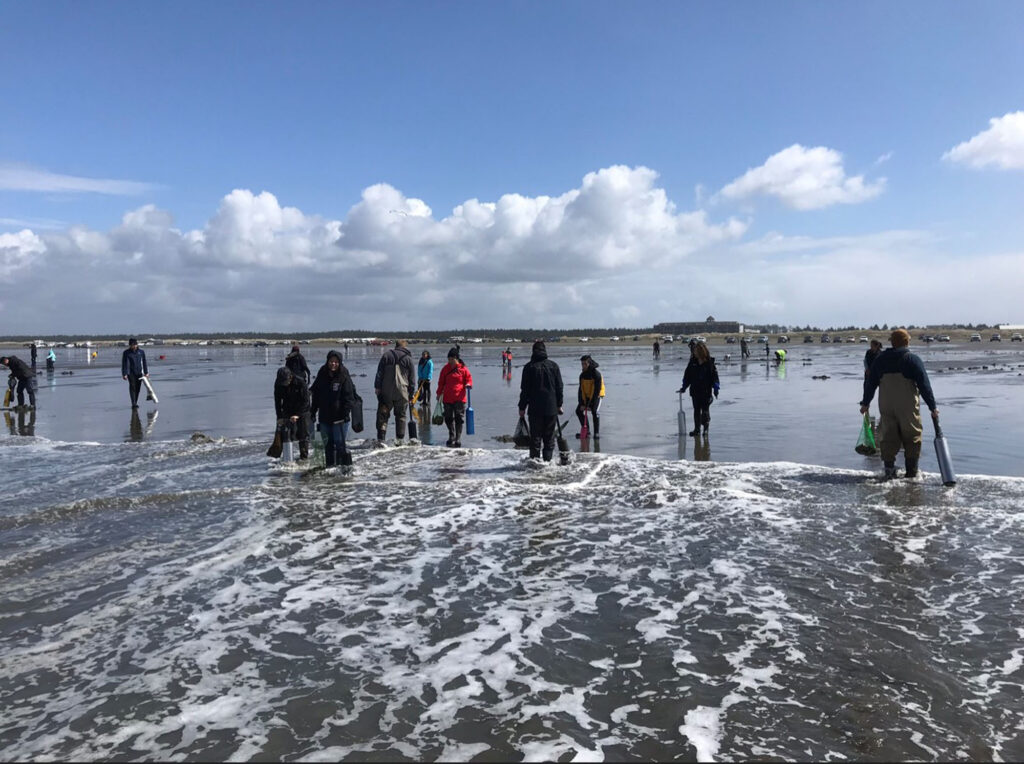
Here in March, all eyes will be focused on a wealth of salmon-related topics, including what the future holds for 2024-25 recreational fishing seasons, and for the winter and early spring Chinook fisheries. In my February column, we got a peek at some of the Columbia River salmon forecasts. Next up, the Washington Department of Fish and Wildlife (WDFW) hosts a public meeting on March 1, where the statewide salmon forecasts will come to light.
Meets & Greets
This kickoff meeting is part of the month-long, season-setting process known as North of Falcon, a term referring to waters north of Oregon’s Cape Falcon, which marks the southern border of Washington’s management of salmon stocks. It includes the Puget Sound, Strait of Juan de Fuca, Columbia River, and coastal Washington salmon stocks.
While the salmon forecasts will be known on March 1, it’ll still be a long road to knowing exactly how those will correlate into specific fishing seasons. State fishery managers use a suite of scientific data, including watershed sampling and monitoring, ocean indicators, and previous year returns, to estimate the number of salmon returning and decipher how many fish are available to catch. The next steps in the season setting process are then to determine if there’s a harvestable surplus; propose fisheries and predict catches; model fisheries to shape which stocks are of conservation concern and constraining fisheries; negotiate with tribal co-managers and other states for equitable catch sharing plans and impacts on weak salmon stocks; and then finalize all fisheries in Washington, Oregon, and California. After several rounds of meetings in March, held up and down the West Coast, all fishing seasons will be finalized at the Pacific Fishery Management Council (PFMC) meetings on April 6-11 in Seattle. (The public can participate in several of these meetings; for a complete, go to: wdfw.wa.gov/fishing/management/north-falcon/public-meetings.)
Fish it Now
Anglers who can’t wait until spring to go salmon fishing have several choices right now including three marine areas of Puget Sound and the Lower Columbia River. Central Puget Sound (Marine Area 10) and south-central Puget Sound (Marine Area 11) open for hatchery winter Chinook fishing on March 1 through April 15. Then, Sekiu-Pillar Point (Marine Area 5) in the western Strait of Juan de Fuca opens on April 1 and through the 30th of that month. Anglers should take note that while there are closing dates, each area could close sooner than expected, so make plans to head out on the front end of that time period to guarantee your time on the water.
An option not driven by any potential premature closure is the southern Puget Sound (Marine Area 13) south of the Narrows Bridge, which is open right now for salmon fishing. Anglers in deep South Sound have reported fair catches of winter hatchery Chinook. A fourth option for salmon chasers is to head south to the Lower Columbia River mainstem where fishing is currently open for spring Chinook below the I-5 Bridge. By the time this magazine issue hits the newsstand, anglers should see an announcement by WDFW on other Columbia River and tributary fisheries for spring Chinook.
No matter where you plan to fish, the key to success in winter is to locate the herring and candlefish baitfish schools that salmon feed on. Tidal influence, and when a slack tide occurs, should also dictate when to be on the water.
Can You Dig It?
Yes, you can: Razor clam enthusiasts are really digging into this winter season, which has been excellent, when the weather and surf conditions allow you to venture out onto coastal beaches. Not all coastal beaches are open for every dig, so diggers are encouraged to make sure their intended destination is open before heading out. Optimal digging occurs between one and two hours before the listed time of low tide.
The Washington State Department of Health requires regular testing for marine toxins. Levels have remained relatively low for most of the season. Final approval usually occurs about a week or less before the start of each digging series.
Tentative dates during evening low tides (noon to midnight only) are: March 7 and March 10-11 at Long Beach, Twin Harbors, and Copalis; and March 8-9 at Long Beach, Twin Harbors, and Mocrocks. More dates are planned during morning/early afternoon low tides (4 a.m. to 4 p.m. only) on March 12-14 at Long Beach and Mocrocks; March 15-16 at Copalis only; and March 17 at Mocrocks only. The Ocean Shores Razor Clam Festival is also happening on March 15-17. Additional tentative dates during morning low tides (midnight to noon only) are March 26 at Copalis only; March 27 at Long Beach and Mocrocks; March 28 and March 31 at Long Beach, Twin Harbors, and Mocrocks; and March 29-30 at Long Beach, Twin Harbors, and Copalis. For more razor clam information, go to: wdfw.wa.gov/fishing/shellfishing-regulations/razor-clamshttps://wdfw.wa.gov/fishing/shellfishing-regulations/razor-clams.


